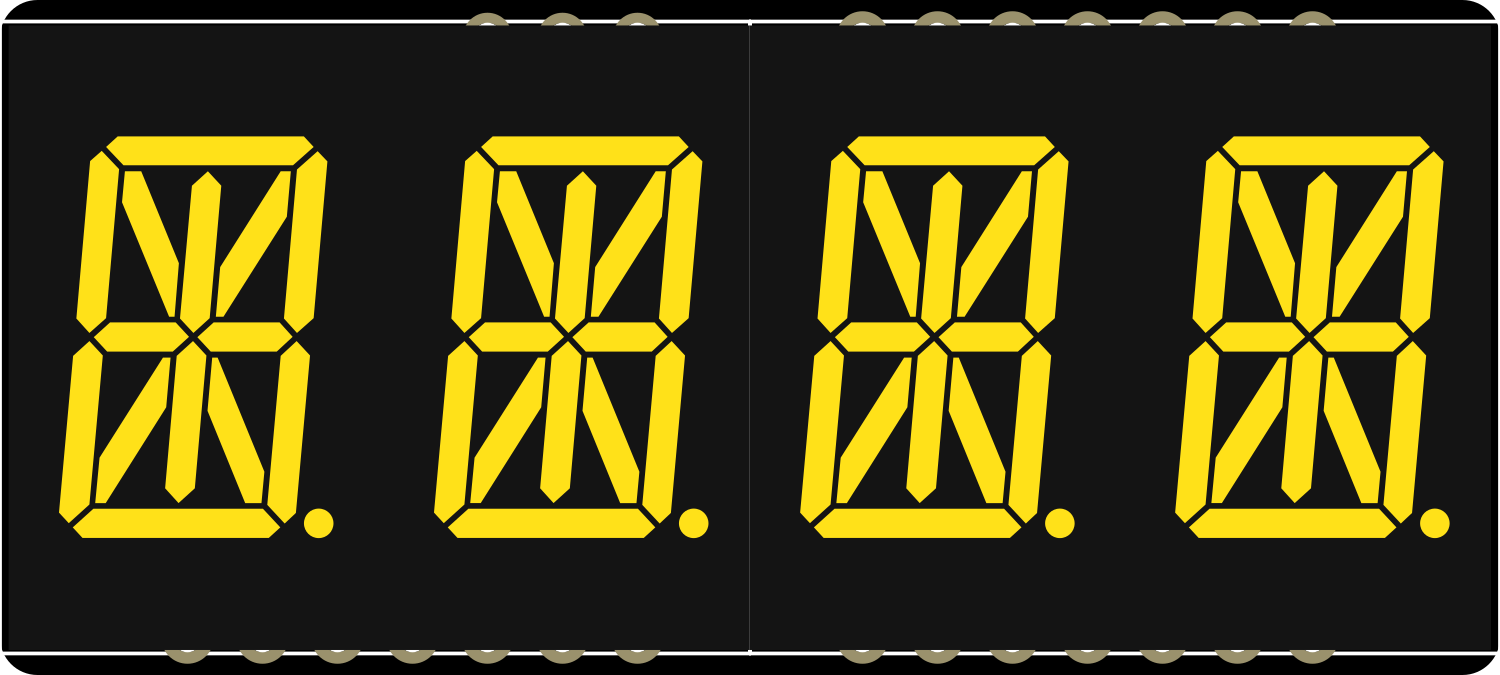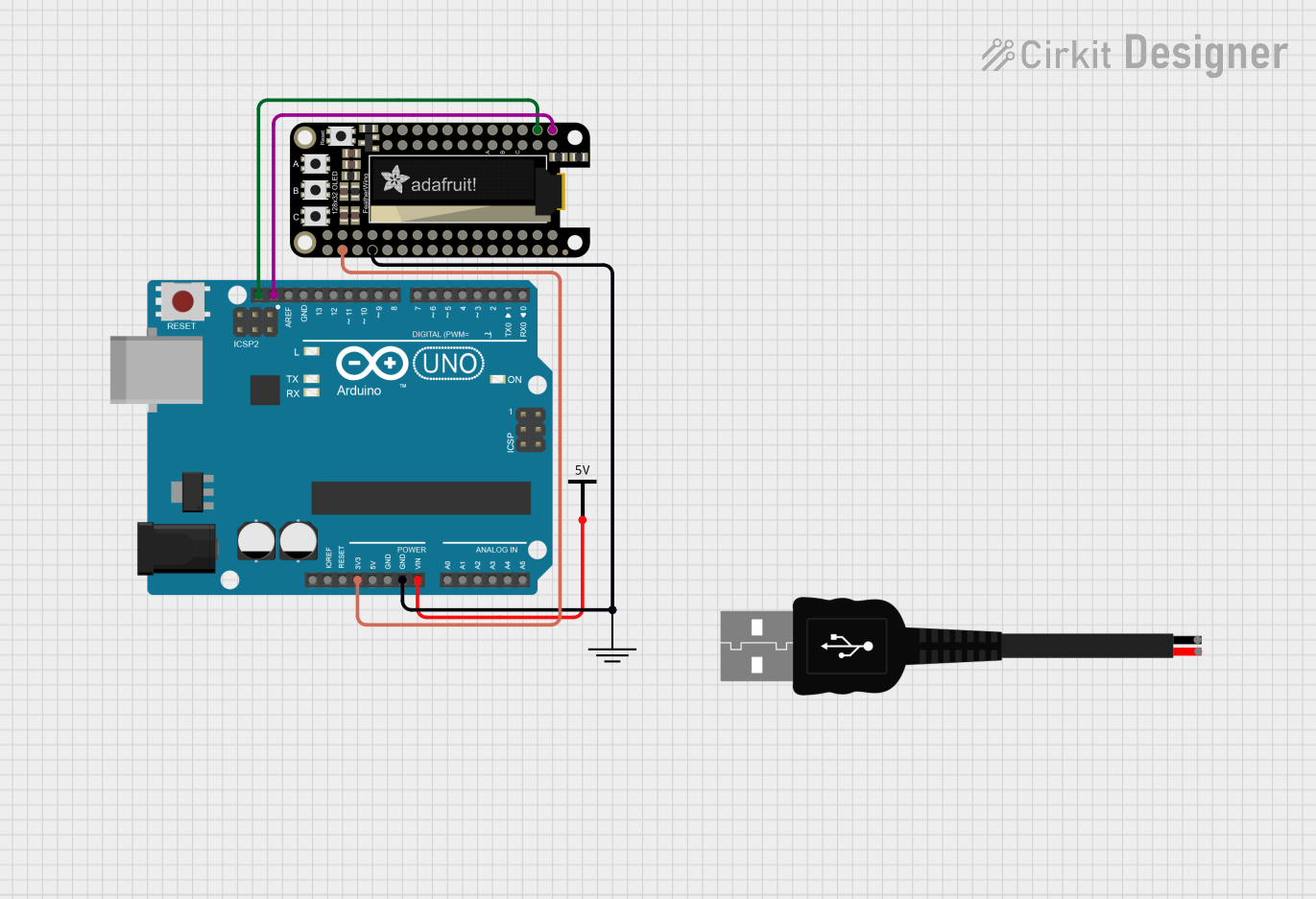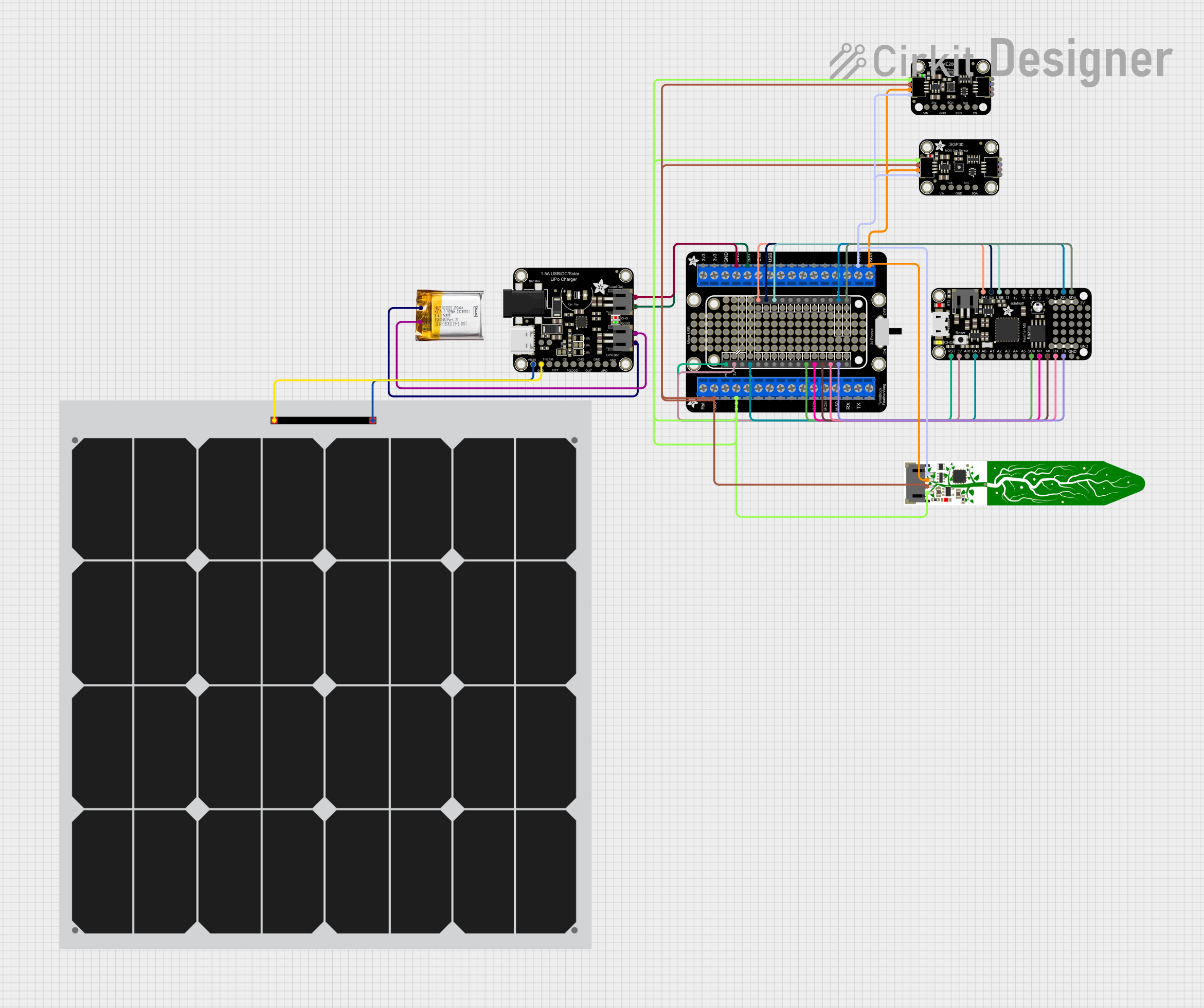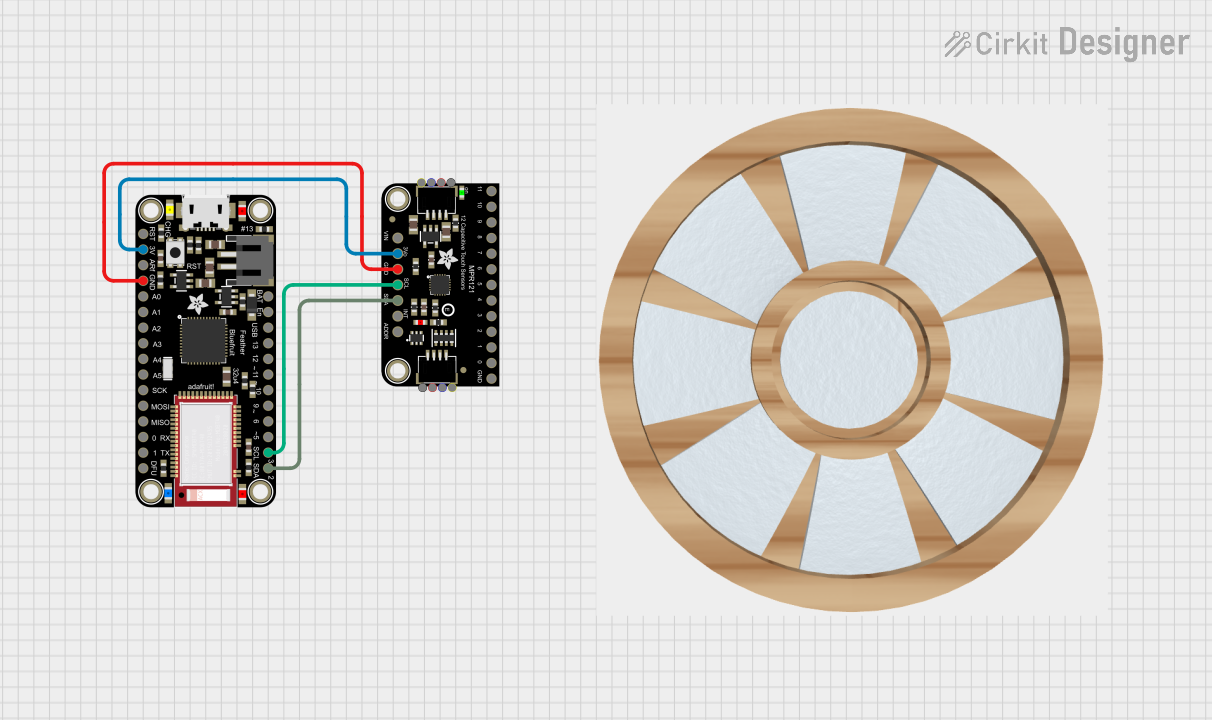
How to Use Adafruit Quad AlphaNumeric Featherwing - Yellow: Examples, Pinouts, and Specs

 Design with Adafruit Quad AlphaNumeric Featherwing - Yellow in Cirkit Designer
Design with Adafruit Quad AlphaNumeric Featherwing - Yellow in Cirkit DesignerIntroduction
The Adafruit Quad AlphaNumeric FeatherWing is a versatile and compact alphanumeric display module designed for use with the Adafruit Feather ecosystem. It features four 0.54-inch high seven-segment alphanumeric displays with a bright yellow LED color. This FeatherWing is ideal for displaying short messages, numerical data, or time, and can be used in a variety of applications such as clocks, counters, and readouts in DIY electronics projects.
Explore Projects Built with Adafruit Quad AlphaNumeric Featherwing - Yellow

 Open Project in Cirkit Designer
Open Project in Cirkit Designer
 Open Project in Cirkit Designer
Open Project in Cirkit Designer
 Open Project in Cirkit Designer
Open Project in Cirkit Designer
 Open Project in Cirkit Designer
Open Project in Cirkit DesignerExplore Projects Built with Adafruit Quad AlphaNumeric Featherwing - Yellow

 Open Project in Cirkit Designer
Open Project in Cirkit Designer
 Open Project in Cirkit Designer
Open Project in Cirkit Designer
 Open Project in Cirkit Designer
Open Project in Cirkit Designer
 Open Project in Cirkit Designer
Open Project in Cirkit DesignerCommon Applications and Use Cases
- Digital clocks and timers
- Counter displays for events or devices
- Status or message display for prototypes
- User interfaces for small-scale projects
Technical Specifications
Key Technical Details
- Display Type: 4 x 0.54-inch seven-segment alphanumeric displays
- LED Color: Yellow
- Common Configuration: Anode
- Interface: I2C
- Operating Voltage: 3.3V to 5V
- Dimensions: 50mm x 23mm x 7mm (without headers)
Pin Configuration and Descriptions
| Pin | Description |
|---|---|
| GND | Ground connection |
| VCC | Power supply (3.3V to 5V) |
| SDA | I2C data line |
| SCL | I2C clock line |
| RST | Reset pin (optional use) |
Usage Instructions
Integrating with a Circuit
- Power Connections: Connect the VCC pin to the 3.3V or 5V output on your Feather board and the GND pin to a ground connection.
- I2C Connections: Connect the SDA and SCL pins to the corresponding I2C pins on your Feather board.
- Mounting: The FeatherWing can be directly attached to the headers on your Feather board.
Important Considerations and Best Practices
- Ensure that the power supply voltage matches the requirements of the FeatherWing.
- Use pull-up resistors on the I2C lines if your Feather board does not have them built-in.
- When stacking multiple FeatherWings, ensure that the I2C addresses do not conflict.
- Avoid exposing the display to direct sunlight for extended periods to prevent damage.
Example Code for Arduino UNO
#include <Wire.h>
#include <Adafruit_LEDBackpack.h>
#include <Adafruit_GFX.h>
Adafruit_AlphaNum4 alpha4 = Adafruit_AlphaNum4();
void setup() {
alpha4.begin(0x70); // Initialize the display with its I2C address
}
void loop() {
alpha4.writeDigitAscii(0, 'A'); // Display 'A' on the first digit
alpha4.writeDigitAscii(1, 'd'); // Display 'd' on the second digit
alpha4.writeDigitAscii(2, 'a'); // Display 'a' on the third digit
alpha4.writeDigitAscii(3, 'F'); // Display 'F' on the fourth digit
alpha4.writeDisplay(); // Send data to the display
delay(1000); // Wait for 1 second
}
Troubleshooting and FAQs
Common Issues
- Display Not Lighting Up: Check the power connections and ensure the I2C lines are properly connected.
- Garbled Characters: Ensure that there are no conflicts with the I2C address and that the display is properly initialized in your code.
- Dim Display: Verify that the power supply is providing adequate voltage and current.
Solutions and Tips for Troubleshooting
- Double-check wiring connections for any loose or incorrect connections.
- Use a multimeter to verify the voltage levels at the power and I2C pins.
- Ensure that the Adafruit_LEDBackpack and Adafruit_GFX libraries are correctly installed in your Arduino IDE.
- Restart your Feather board and re-upload the code if the display behaves unexpectedly.
FAQs
Q: Can I use this FeatherWing with boards other than Adafruit Feather?
A: Yes, as long as the board supports I2C communication and operates within the voltage range of the FeatherWing.
Q: How do I change the I2C address of the display?
A: The I2C address can be changed by soldering the address jumpers on the back of the PCB. Refer to the Adafruit guide for the specific jumper settings.
Q: Can I use multiple FeatherWings in one project?
A: Yes, you can stack multiple FeatherWings, but ensure that each has a unique I2C address to avoid conflicts.